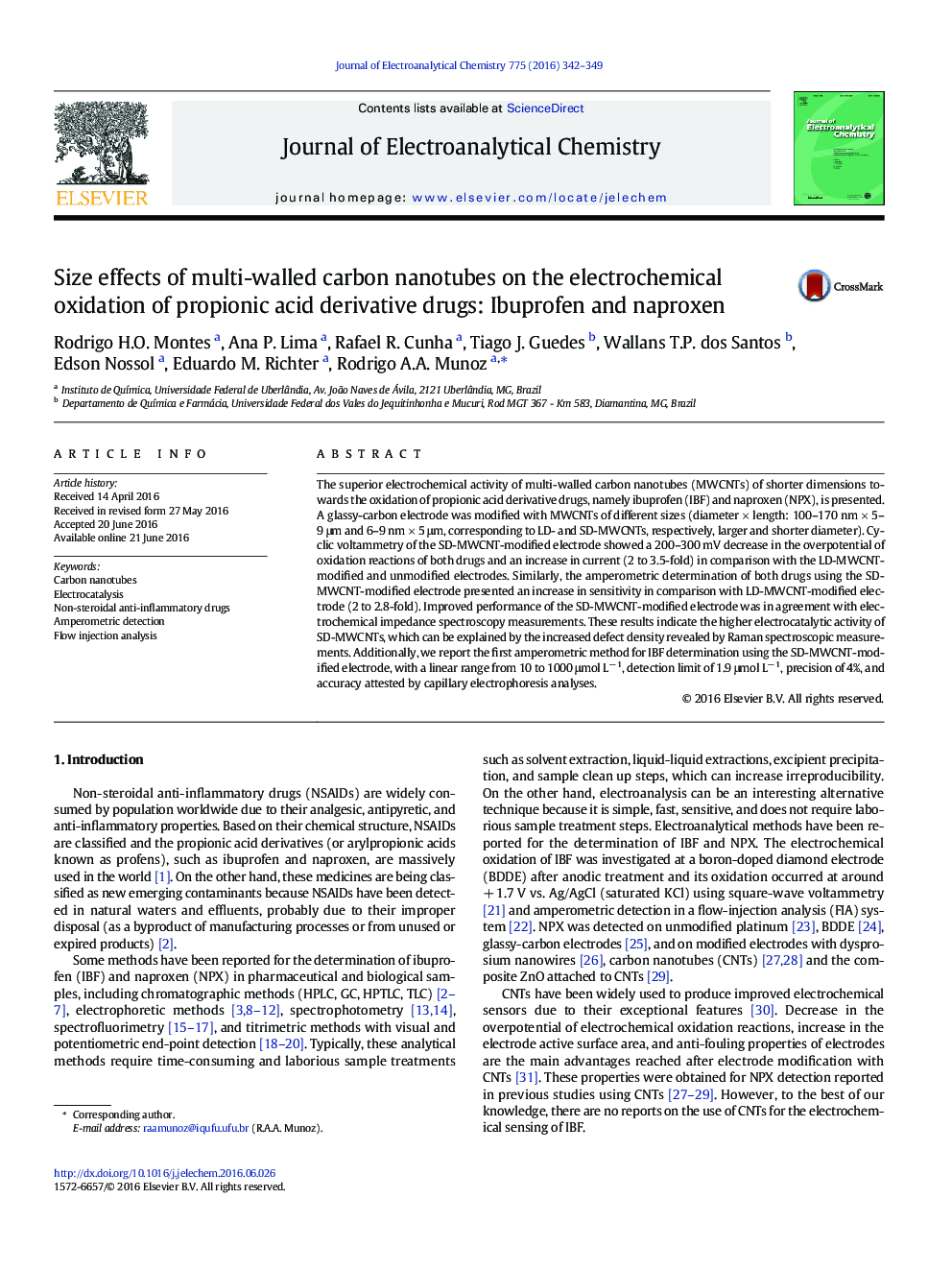| Article ID | Journal | Published Year | Pages | File Type |
|---|---|---|---|---|
| 217865 | Journal of Electroanalytical Chemistry | 2016 | 8 Pages |
•The electrochemistry of ibuprofen and naproxen is affected by dimensions of MWCNT.•Short diameter MWCNT provided 200–300 mV decrease in the overpotential reactions.•Substantial increase (2 to 3.5-fold) in current was verified at the short diameter MWCNT.•Increased defect density was in agreement with nanotube diameter.•Amperometric detection of ibuprofen in the μmol L− 1 range using modified electrode.
The superior electrochemical activity of multi-walled carbon nanotubes (MWCNTs) of shorter dimensions towards the oxidation of propionic acid derivative drugs, namely ibuprofen (IBF) and naproxen (NPX), is presented. A glassy-carbon electrode was modified with MWCNTs of different sizes (diameter × length: 100–170 nm × 5–9 μm and 6–9 nm × 5 μm, corresponding to LD- and SD-MWCNTs, respectively, larger and shorter diameter). Cyclic voltammetry of the SD-MWCNT-modified electrode showed a 200–300 mV decrease in the overpotential of oxidation reactions of both drugs and an increase in current (2 to 3.5-fold) in comparison with the LD-MWCNT-modified and unmodified electrodes. Similarly, the amperometric determination of both drugs using the SD-MWCNT-modified electrode presented an increase in sensitivity in comparison with LD-MWCNT-modified electrode (2 to 2.8-fold). Improved performance of the SD-MWCNT-modified electrode was in agreement with electrochemical impedance spectroscopy measurements. These results indicate the higher electrocatalytic activity of SD-MWCNTs, which can be explained by the increased defect density revealed by Raman spectroscopic measurements. Additionally, we report the first amperometric method for IBF determination using the SD-MWCNT-modified electrode, with a linear range from 10 to 1000 μmol L− 1, detection limit of 1.9 μmol L− 1, precision of 4%, and accuracy attested by capillary electrophoresis analyses.
